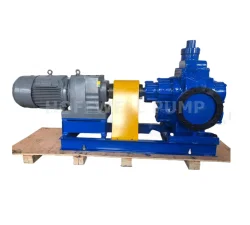Understanding the Importance of a Testing Pump in Industrial Applications
2024-09-14
In many industries, the need to ensure that systems operate under safe and reliable conditions is paramount. One of the critical tools used in this process is the testing pump. Whether it’s for plumbing, heating systems, or hydraulic applications, a testing pump helps verify the integrity of pipes, tanks, and other pressurized systems. In this blog, we’ll explore the importance of a testing pump, its common uses, and how it contributes to maintaining operational safety.
1. What is a Testing Pump?
A testing pump is a device designed to pressurize pipes, valves, or other components to ensure they are leak-proof and can handle high-pressure conditions. It is commonly used in industries like plumbing, HVAC, oil and gas, and manufacturing, where pressure testing is essential to ensure the safety and longevity of equipment.
Testing pumps come in various types, including manual, electric, and hydraulic. Each type offers different levels of pressure and is suited for specific applications. Manual pumps, for example, are often used for smaller systems, while electric or hydraulic pumps are ideal for larger, more complex systems that require higher pressure.
2. Applications of Testing Pumps
Testing pumps are used across a wide range of industries to verify the integrity of systems that operate under pressure. Common applications include:
- Plumbing and Piping Systems: Testing pumps are often used to detect leaks in water supply lines, plumbing systems, and pipelines before they are put into operation.
- Heating Systems: In HVAC installations, testing pumps ensure that heating and cooling systems are leak-proof and can withstand operational pressure.
- Hydraulic Systems: In manufacturing and industrial settings, testing pumps are used to test hydraulic cylinders, valves, and systems for leaks or weaknesses that could compromise performance.
- Oil and Gas Pipelines: Testing pumps play a crucial role in ensuring the safety of oil and gas pipelines, which must withstand high pressure during transport.
3. Why Pressure Testing is Essential
Pressure testing is critical for preventing leaks, breakdowns, or catastrophic failures in any pressurized system. A leak in a hydraulic system, for example, can lead to operational inefficiency, safety hazards, and costly repairs. In plumbing and heating systems, pressure testing ensures that pipes and components can handle the necessary operational pressures without leaking or bursting.
Without regular pressure testing, systems may deteriorate over time, leading to costly downtime, repairs, or, in extreme cases, accidents that can jeopardize both human lives and the environment.
4. Types of Testing Pumps
Different types of testing pumps cater to various applications, depending on the pressure required and the complexity of the system:
- Manual Testing Pumps: These are ideal for smaller systems and projects that require moderate pressure levels. They are often lightweight and portable, making them convenient for on-site testing.
- Electric Testing Pumps: These pumps are used in larger applications where high pressure is needed. They are efficient and reduce the manual labor required to achieve the necessary pressure.
- Hydraulic Testing Pumps: These are heavy-duty pumps designed for testing large and complex systems like industrial pipelines or hydraulic cylinders. They can deliver extremely high pressures, making them suitable for large-scale operations.
Conclusion
The testing pump is a crucial tool for ensuring the safety and efficiency of pressurized systems across various industries. From plumbing to industrial applications, testing pumps play a vital role in maintaining operational integrity and preventing potential hazards. Regular pressure testing can help avoid costly breakdowns and repairs, ensuring that systems remain reliable and safe over time.



